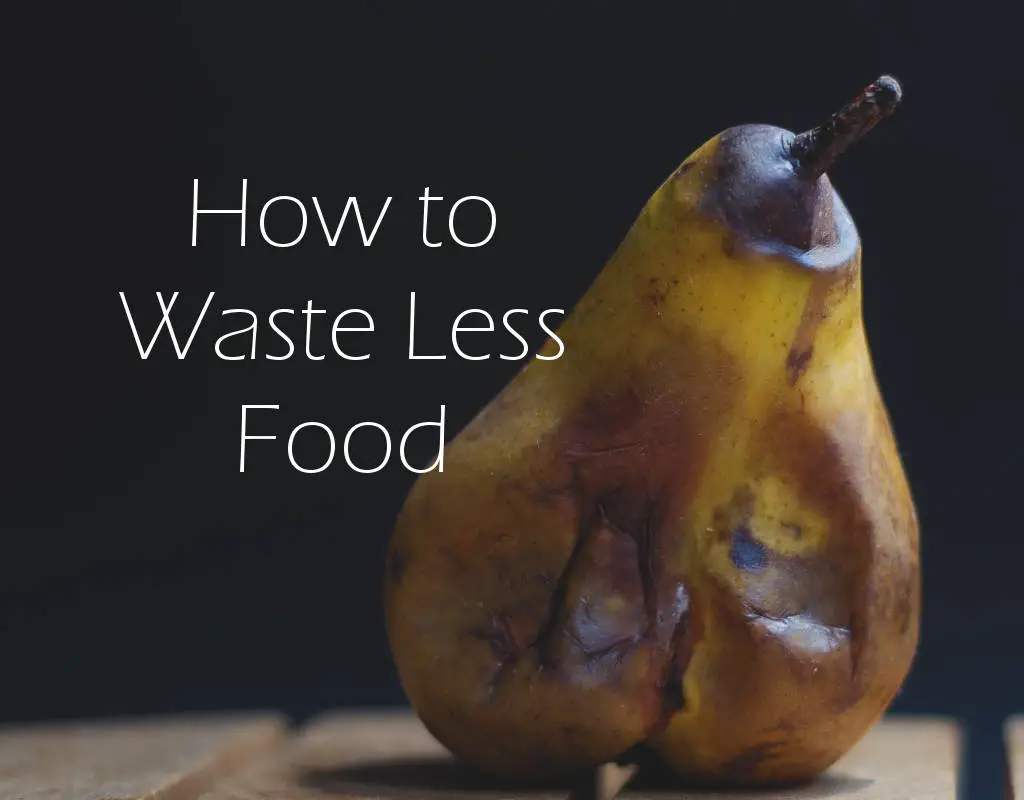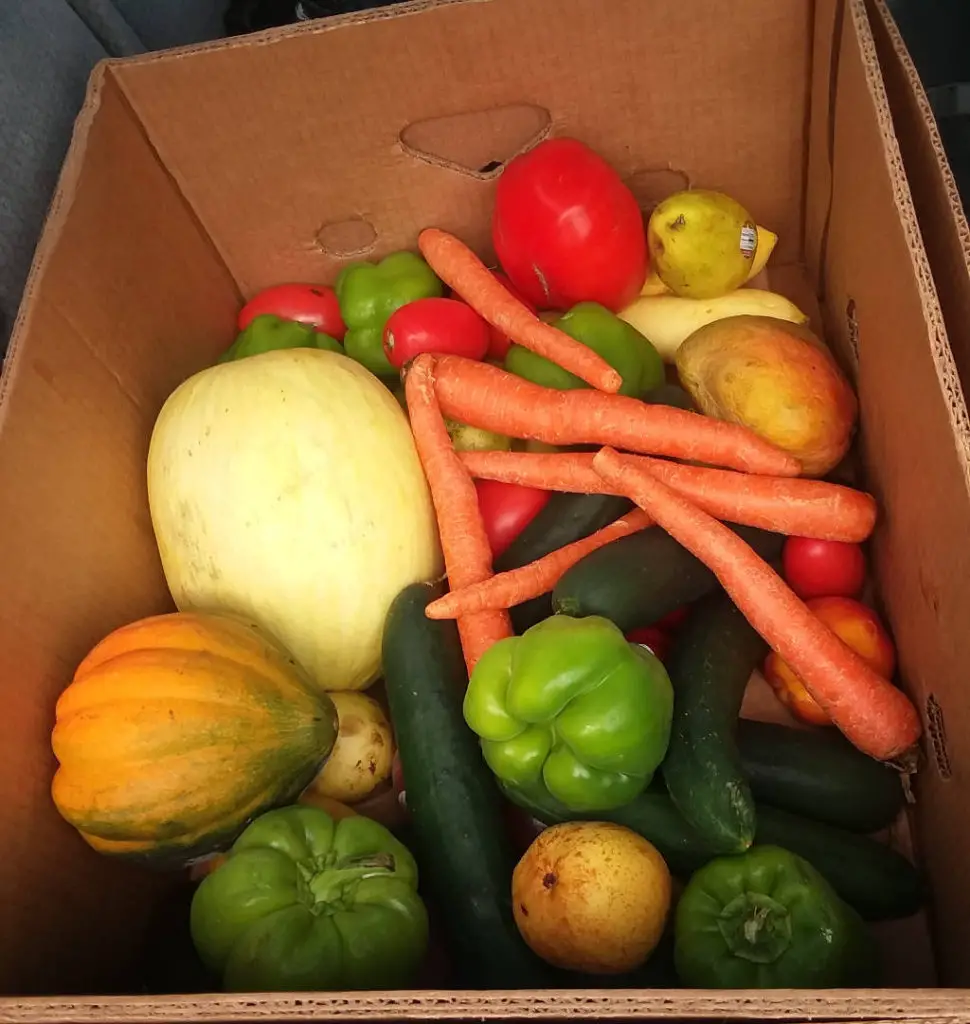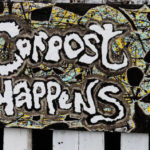How to Waste Less Food

How to Waste Less Food

Food waste is an enormous environmental and economic problem. In the United States, we waste about 40 percent of perfectly edible food, which is 125 – 160 BILLION pounds of food that goes uneaten. Not only is that a huge economic loss, but that food takes enormous amounts of energy, resources, water and chemicals to grow, process, package and ship.
Then much of our wasted food ends up in landfills, taking up space and giving off methane that contributes to global warming. Much of this waste happens before it ever gets to us, but American households also waste a lot of food when it goes bad before it can be used.
There are many things we can do as consumers to be more mindful of our choices and waste less food.
Easy Tips for Reducing Food Waste
- Take a list to the store! This may seem like an obvious one, but reducing food waste starts with not buying more than you need. Take a careful inventory of what you already have and make a list that only includes what you need.
- A sale isn’t a deal if you’re never going to eat it. It’s tempting to buy items that are a really great “deal,” but if it’s an item that you or your family don’t really love or need, chances are that it will sit in the cupboard or the back of the fridge until it goes bad and you just end up having to throw it out.
- Don’t make leftovers if you’re not going to eat them. I don’t know how many times my partner and I have made extra food and packaged up leftovers that we think we will eat, but then never do. Certain leftovers will almost always get eaten (pizza, risotto, stuffing), and other leftovers just aren’t that tasty warmed up the next day (soggy green beans, half a pork chop, dried up potato wedges). Start to pay attention to those leftover items that end up getting thrown out, and make smaller quantities so as not to have any leftovers.

- Mark the date on your leftovers with a dry erase marker. This little tip has been huge for us. So many times we would pull something out of the fridge and say to each other, “When did we make this?” Once it’s been more than a couple days, it just becomes impossible to remember. There’s always the sniff test of course, but having a date on there makes it really easy to see whether something is fine to eat or maybe a bad idea.
- Organize your dry goods and put new purchases in back. If your pantry is a jumbled mess, when you want a can of black beans or whatever, you will tend to grab the first one you find, which will also tend to be one of the newer ones in front. If you have all the beans in one area, and then always put your new purchases towards the back, the stuff at the front will be the older stock. Make an effort to check your dates and use the ones that are about to expire the soonest.
- Consider buying food that isn’t “perfect.” This is a tough one, I know. You’re at the store, picking through the produce and you always want to get the best quality you can for your money. But if you grab that parsnip with a few blemishes on it, it will be just as good and you’ll likely save it from being thrown out after everyone passed it over.
- Understand food date labeling. If something says “best by” or “sell by” that does not mean it needs to be thrown out after that date, it’s simply a recommendation of when the reseller ought to sell by. Most foods, especially dry and canned goods, have a shelf life pretty far beyond that date. “Use by” is a bit more strict, and generally you should not eat food after that date, but again, use your best judgement. Food sometimes spoils before a “use by” date, and in other cases it is still okay after that date. Rule of thumb: if it smells spoiled, don’t eat it.
- Prepared meal services aren’t the devil. I can hardly believe I’m saying this, but those meal kits from Blue Apron and HelloFresh can actually be a more environmentally friendly option for many people than preparing meals from scratch. I found it hard to believe too at first, because all that extra packaging and having meals individually shipped to your door seems so wasteful. But NPR featured a study that looked at the entire life cycle of food production for these kits versus cooking from scratch, and because people who use these kits usually waste less food (because everything is measured out to only the amounts needed), they actually end up having a lower overall impact. So don’t feel too guilty if you use them. If they keep you from wasting food, they might be a better option.
Want to do more?
- Start a compost bin for your rotten stuff. Sometimes food waste just can’t be avoided. Starting a compost bin has great benefits for your garden soil. Composting also keeps food out from going to the landfill where it can’t break down properly, which creates methane, a big contributor to global warming. Don’t have a yard? We have some ideas for apartment composting as well.

- Get involved with a food saving nonprofit. I volunteer with a Food Rescue program here in my city run by the Hunger Network. They partner with grocery stores and restaurants that have extra food that will otherwise go to waste and distribute it to organizations in need. They always need volunteers to transport that food from the donor to the recipient. It is a great way to keep food from being wasted while helping feed hungry people. Google “Food Rescue” and your city to see if there is a food saving organization near you!




